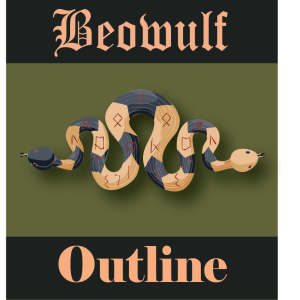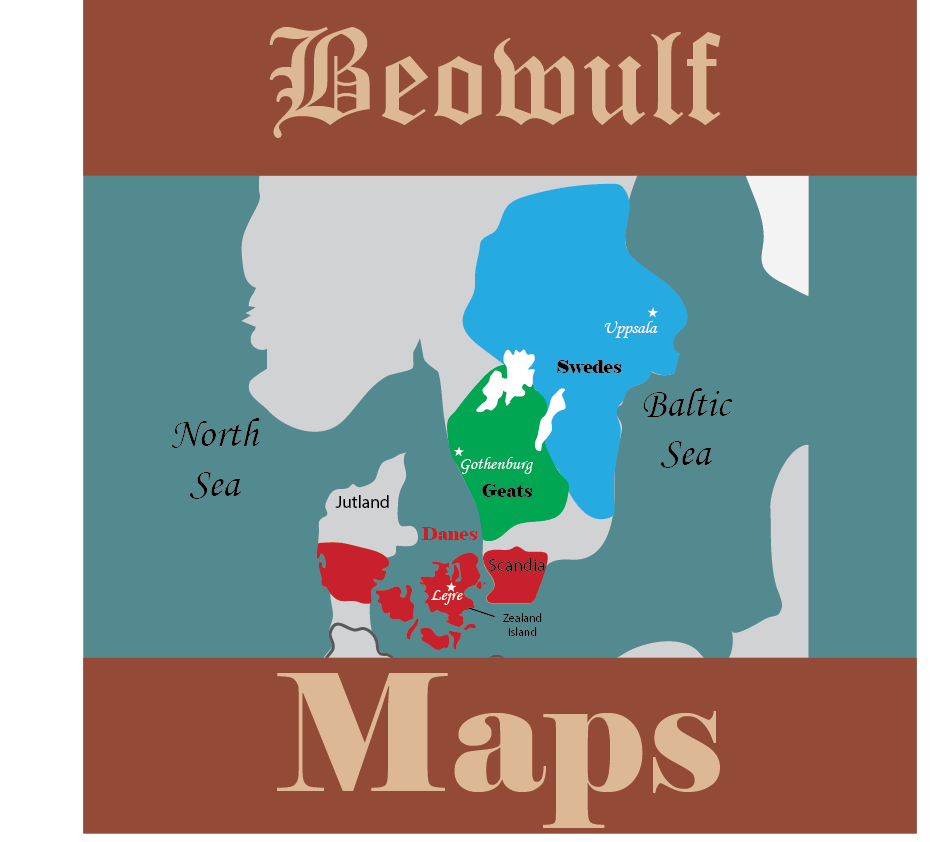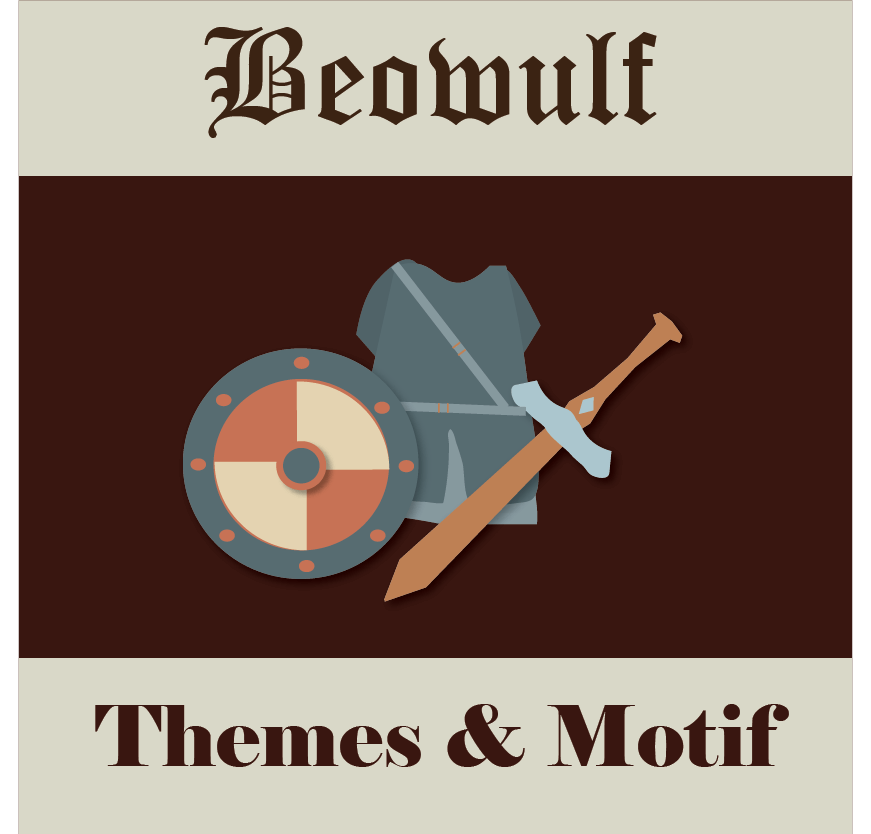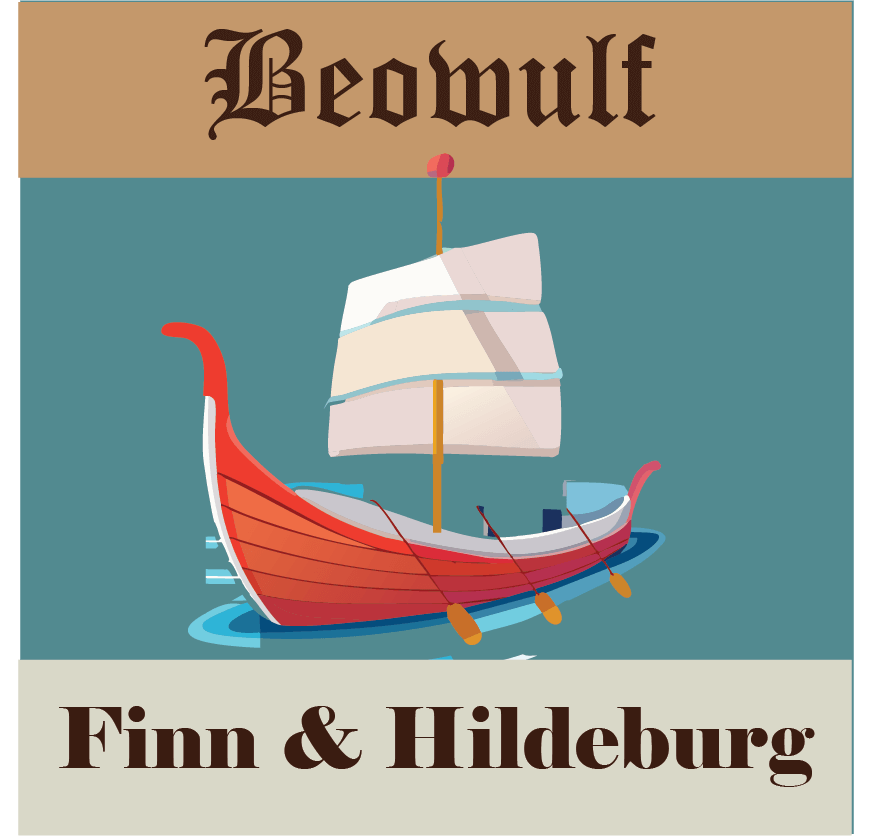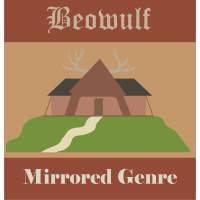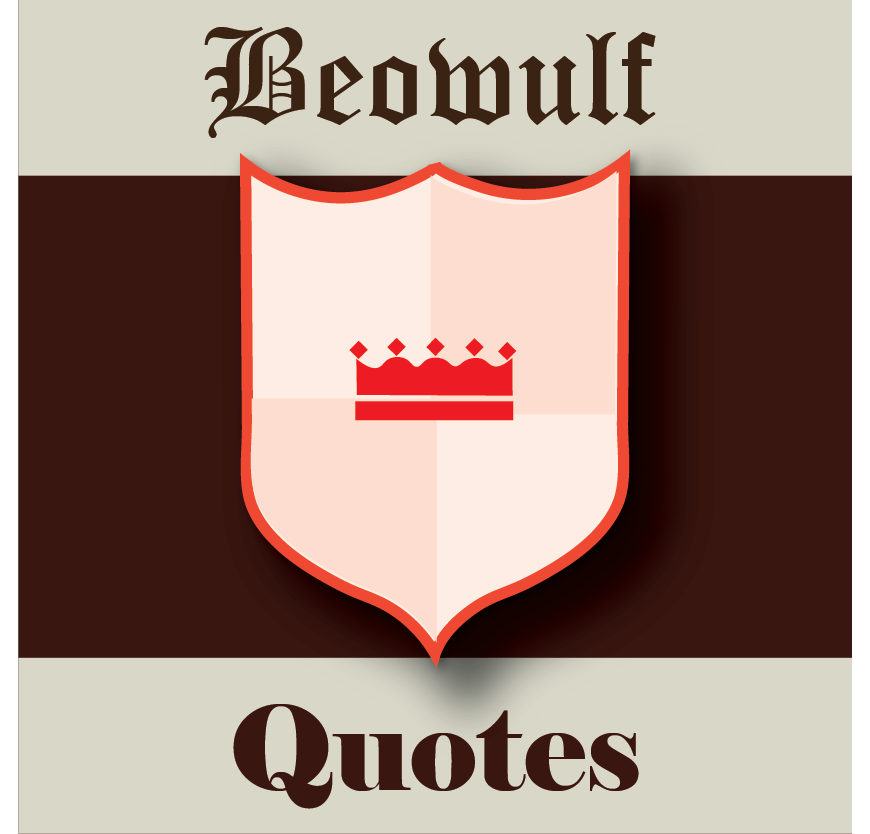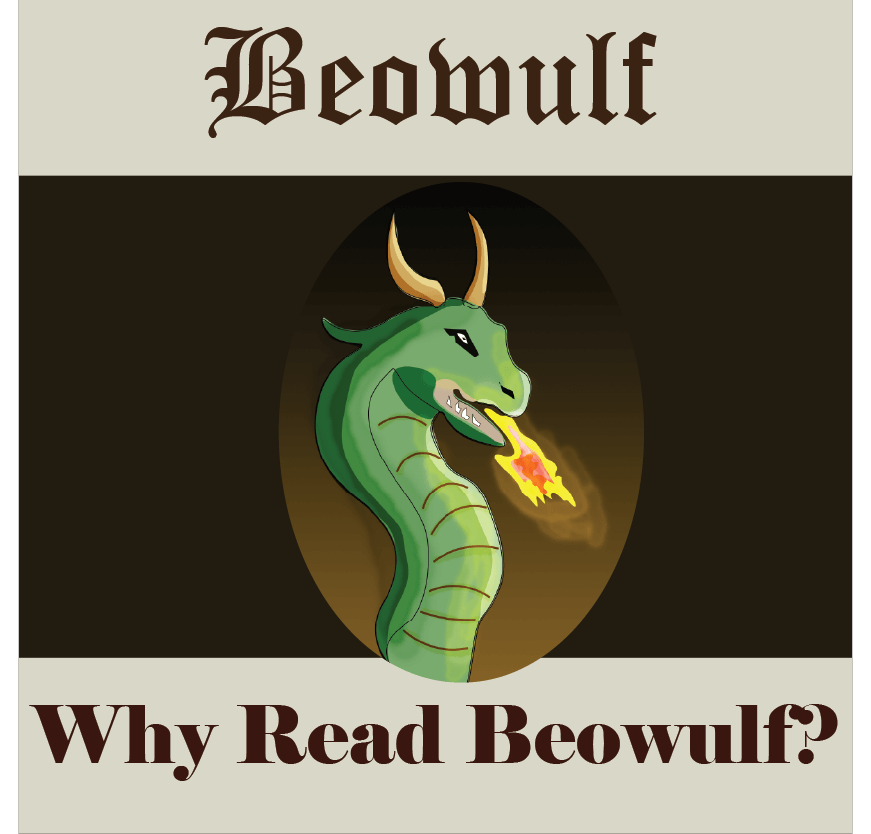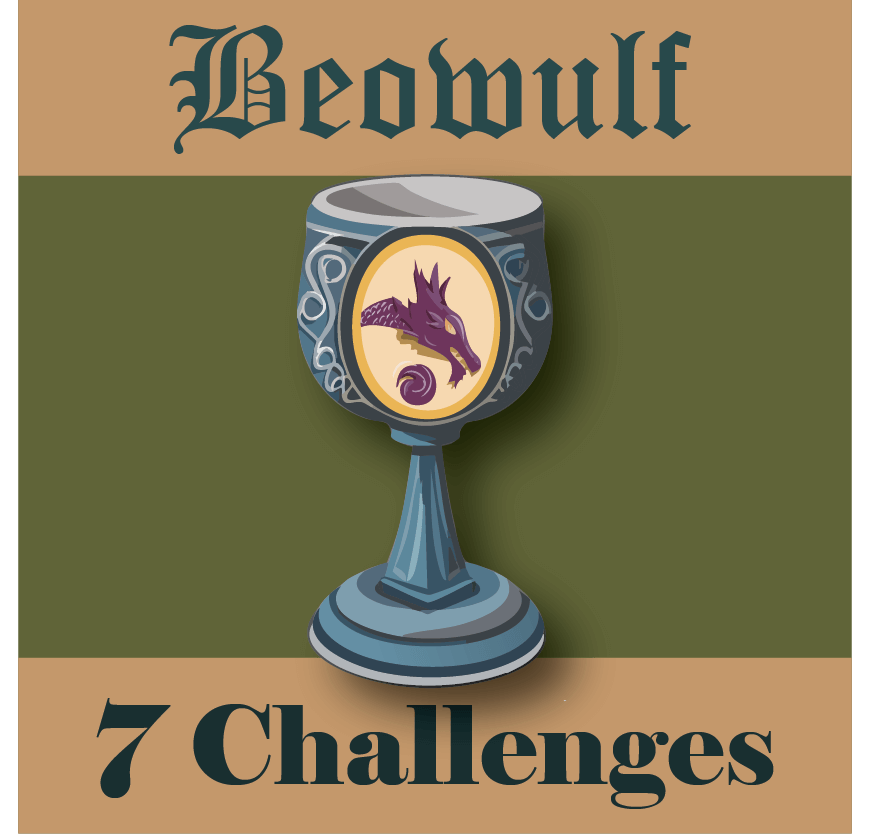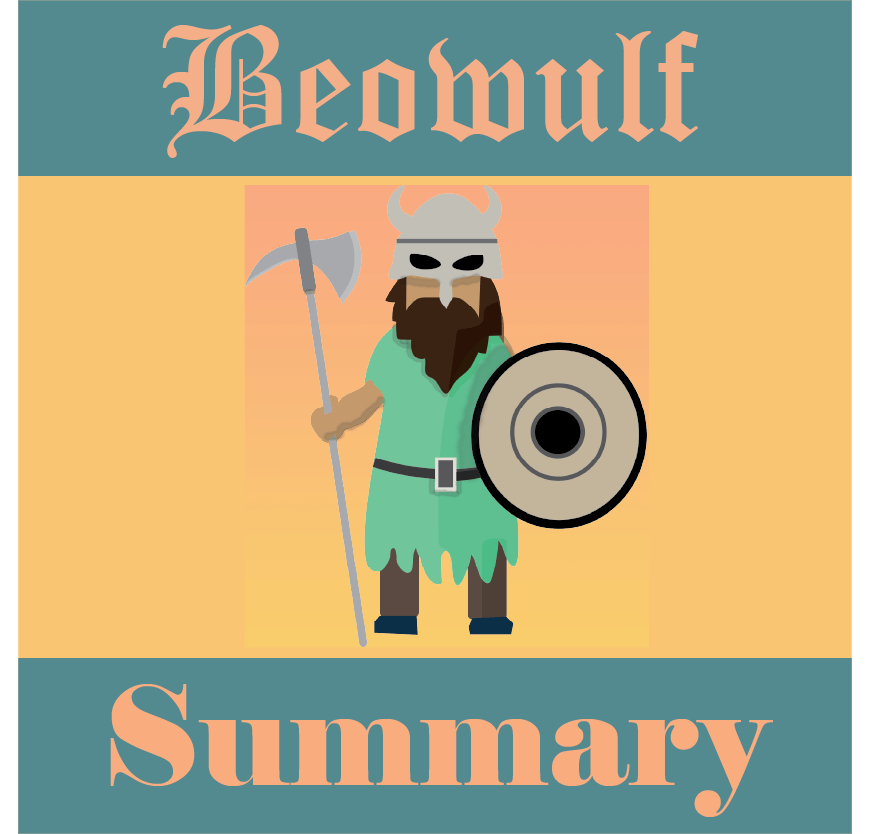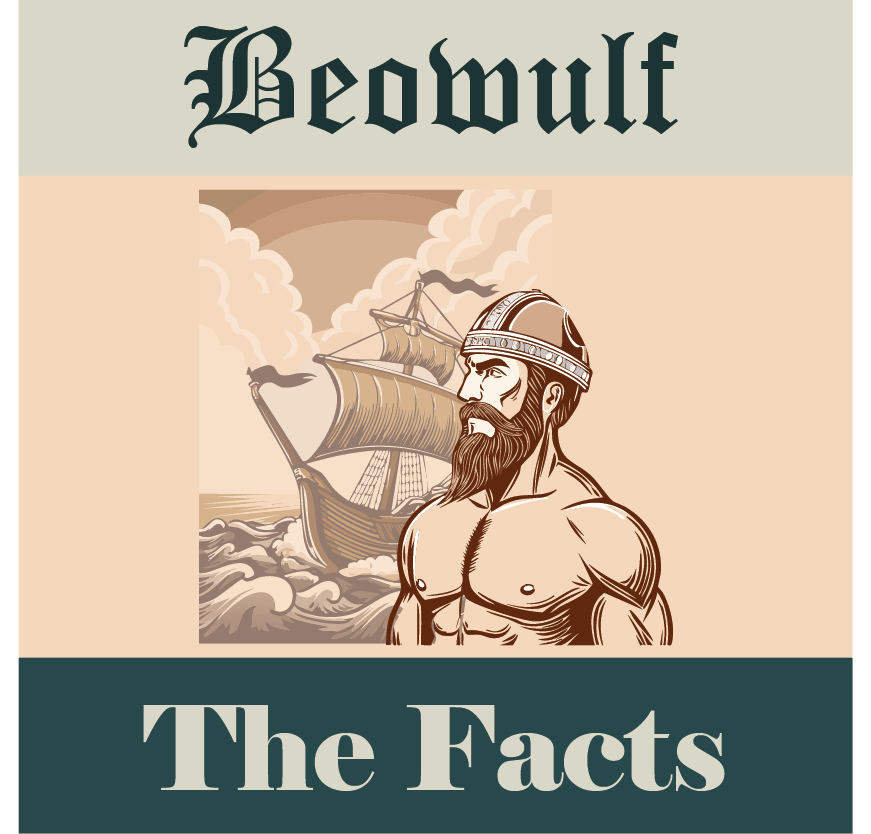
Mise en Abyme in Beowulf
Beowulf contains a mirrored-genre, also known as mise en abyme,
with a significant effect to the story-line.
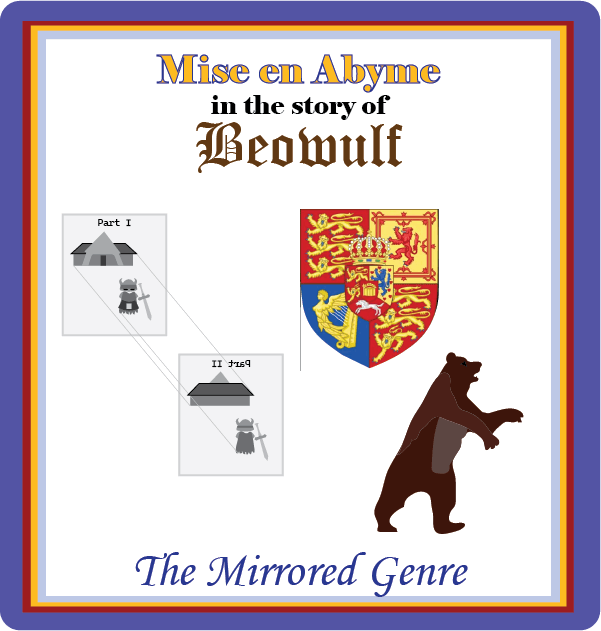
Mirrored Genre
Definition and Examples
A mirrored genre is a form of literature in which the story contains the genre which portrays the story-line.Examples are more helpful than the definition:
- A play within a play
- A poem about a poem
- A song of a song
- A novel about writing a novel
- A television mini-series with characters developing a mini-TV series
- A movie about a movie
- etc.
Beowulf: A Mead Hall Performance in a Mead Hall Performance
At first, it looks like the scop's(ie minstrel or bard) mead hall performance after Beowulf's victory over Grendel is another example (albeit, a unique one) of a simple mirrored genre.It's actually more than that. The unidentified Beowulf author is going to take the concept up a notch. (And, mind you, centuries before the rest of us even came up with a name for it.)
Mise En Abyme Definition
pronounced meeze on UHbeem
Rhymes with peas on a beam
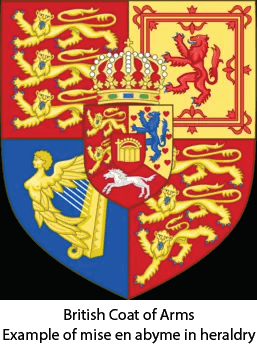
(variant mise en abîme)
French Translation “placed in the abyss” (In this case, "abyss" means "bottomless or without end".)
Etymology: The term originally referred to placing a smaller picture of a military shield inside a larger picture of that shield. The British coat of arms is an oft-quoted example.
Historical Development: In 1893 the French writer André Gide applied the term to a broader form of artistic elements, particularly literature.
Modern Connotation: Snow Marcus argued in his 2016 PhD dissertation that mise en abyme has become a metaphor for "abysmal or miserable" and applied it to a number of specific literary works:
- Shakespeare’e Hamlet, Hamlet produces a play within the main play - one of the most famous examples of Mise en Abyme
- Aldous Huxley’s Point Counter Point (1928), a novel about a novelist who is writing a novel.
- Edgar Alan Poe’s The Fall of the House of Usher [1839] gives a two for one mise en abyme special. A story-in-a-story is read to the main character, it also has a ballad which reflects the setting.
- He did NOT apply it to Beowulf.
Mirrors in A Mirror
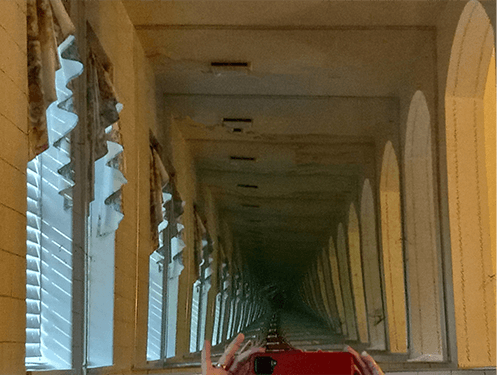
One archway and one window repeat in two mirrors.
In the picture above, there is only one archway (to the right), and one window (to the left) and one camera. But with a mirror in front and behind, there appears to be an infinite number.
This is an appropriate analogy for the forward-and-backward effect of time at the end of Beowulf.
Examples of Mise Em Abyme in Classical Art
Modern photographers and painters have a real knack for trying to capture the impossible. But let's look at some of their fore-runners.
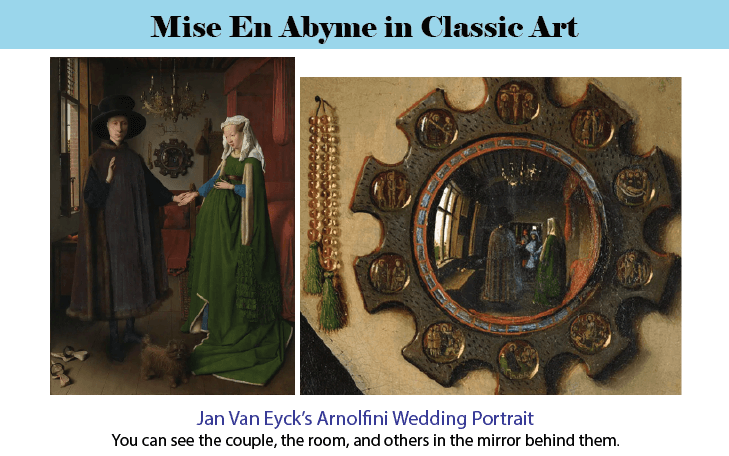
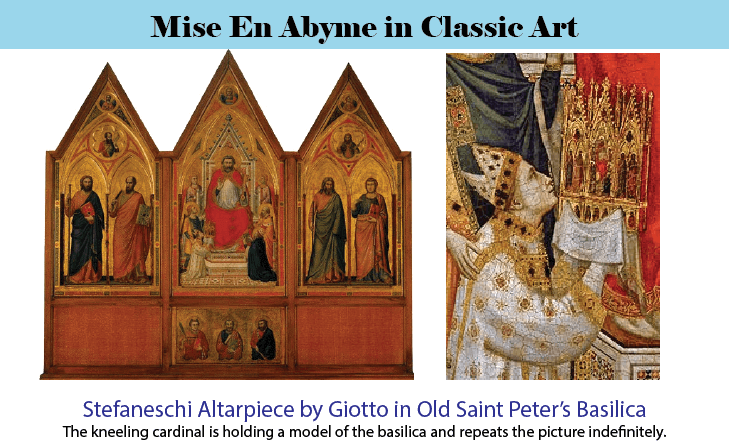
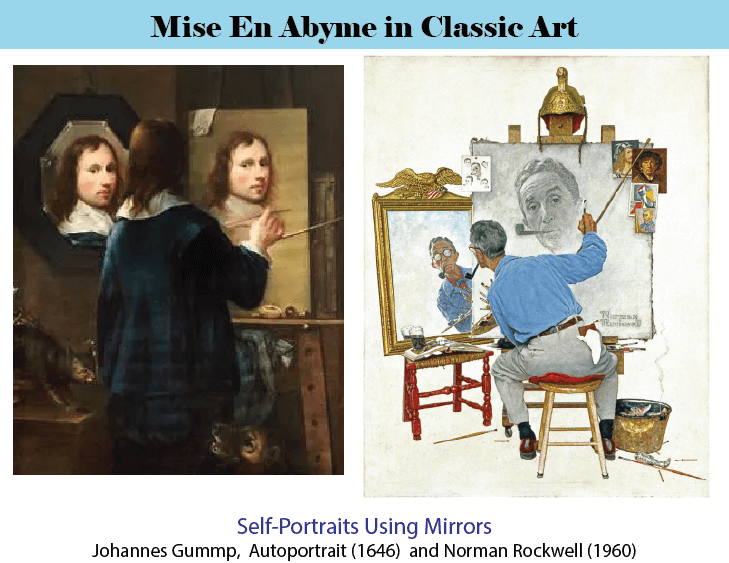
If we aren't willing to give Rockwell the bonus points for accuracy, we'll give them to him for humor.
Rockwell isn't actually looking at his reflection. He is looking out into the middle of the room, possibly at a portrait of himself - in which case the portrait is painting the portrait. (Note the presence of glasses, the inability to see where his eyes are looking, and the different tilt of his head. Such details!)
Additional elements that may or may not qualify as mise en abyme
- To the right of the canvas he has placed four famous classical self-portraits (theoretically indicating a well-endued self-concept - in contrast to his self-deprecating humor.)
- To the left of the canvas he has five sketches of himself indicating he already had decided how the portrait should look and didn't need the reflection in the mirror - which he isn't looking at anyway.
- What do you think will happen first: his drink will spill or the smouldering trash will erupt in flames?
Droste Effect and Mise Em Abyne
The Droste Effect is a recursive element in a commercial product. Below are some relatively famous examples (including the Droste Cocoa Company from which it was named.)
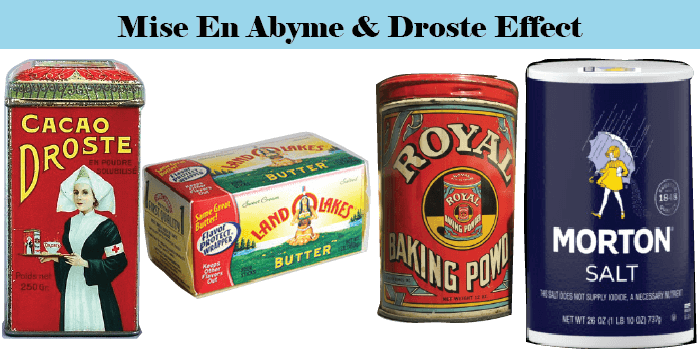
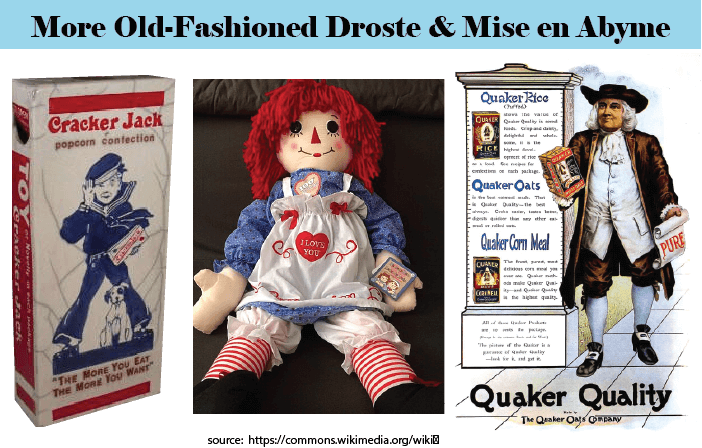
Personal Favorite Example
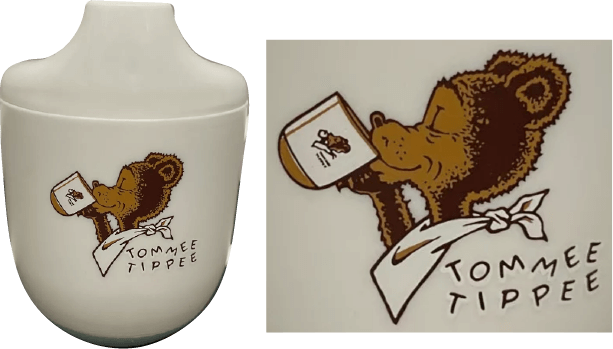
But, unbeknown to my small-self, I had indeed stumbled upon the Droste Effect and my first encounter with mise en abyme.
Now - back to Beowulf.
Nested Story
A nested story is a story-in-a-story. This is actually not uncommon and occurs whenever the characters within a tale recount another story.Nested Stories in Beowulf
Beowulf uses the story-in-a-story technique to present multiple historical narratives to the reader. While these may throw readers off the first time they read the book, they actually are the key to understanding the narrative. The author uses multiple literary techniques to portray these events:- Tales are told in the mead hall.
- Beowulf recounts his swimming contest with Brecca as a flashback.
- Beowulf foreshadows the burning of Hearot Hall in a conversation with King Hygelac.
- The account of Queen Thyrth appears to come out of nowhere (while contrasting with Queen Hygd.)
- Beowulf recounts the story of his reign before the fight with the dragon.
Nested Story vs Mis En Abyme
To get technical, a nested story is not necessarily a form of mis en abyme. Consider these possibilities:- A movie about a bank-robber who watches a movie about a bank robber (Nested, mise en abyme, and Mirrored Genre)
- A novel about a bank robber who watches a movie about a bank robber (Nested, mise en abyme, but not
mirrored) - A novel about a teacher who tells her class a story about a bank robber (Nested, but not
mise en abymeormirrored)
Beowulf can be considered an example of literature where the outer frame and the inner frame are both mirrored.
Beowulf and the Mirrored Genre
Now we come back to the main point: Beowulf is a narrative poem with a mirrored genre (one of many forms of mise en abyme.)Of course, we have the scop performing the tale of Sigemund inside his song about the Beowulf defeating Grendel. Did you catch the fact that this is a story-in-a-story-in-a-story?
It is hard NOT to notice the author's deference to his counterpart - the sixth century scop in King Hrothgar's court:
Known for their excellence; oft a thane of the folk-lord,
A man of celebrity, mindful of rhythms,
Who ancient traditions treasured in memory,
New word-groups found properly bound:
The bard after ’gan then Beowulf’s venture
Wisely to tell of, and words that were clever
To utter skilfully, earnestly speaking
(Hall, XIV, Lines 31-37)
Role of the Mead Hall
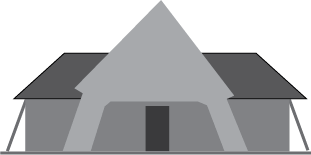
- The fame of Hearot Hill, most famous of mead halls, high on a lofty hill
- The desertion of the hall due to Grendel's reign of terror
- Hrothgar's statement that he had never entrusted Hearot Hall to anyone else
- The battle within between Grendel and Beowulf that ransacked everything
- The foreshadowing of the burning of Hearot Hall
Gold - the giving and receiving of gold is mentioned in all sections of the poem. It is a both a major theme and a motif of the story.
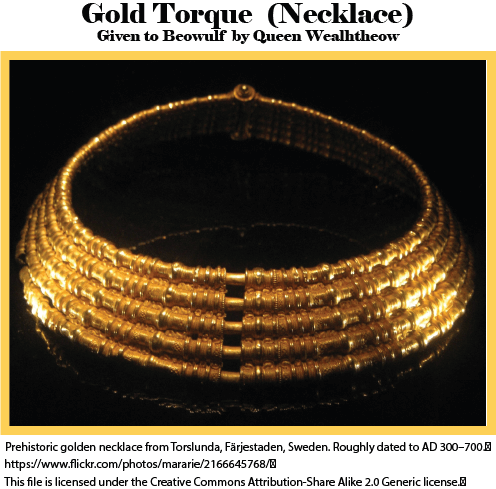
- The kings are referred to as givers-of-gold and are judged by their generosity in distributing it.
- They need a hoard of gold in order to give it away.
- The queens are dressed in it.
- The giving is done in the mead hall.
- Their entire economy is built upon it.
Historical Narratives - those crazy historical narratives keep popping up. (I basically ignored them first time I read the book.) These are not extraneous pieces of information. These are complex strands that all come together at the end of the poem. One of the most famous of these narratives - the story of Finn, Hildeburg, Hnaef, and Hengest is another mead hall narrative where the setting is intrinsic to the story.
Queens as Peaceweavers - The queen brings together the themes of mead hall and gold. They were the "peace-weavers" that were married off to other royal families to help keep the peace. They co-ruled (as much as women could in those days) in the hall, distributing drink and gifts. And through all these apparently unrelated historical narratives, they suffered when revenge from old blood feuds resurrected.
Mead Hall and Gold in Part II
In the second part of the tale (Beowulf vs Dragon) the mead hall continues to loom large - though not as large. As soon as returning to Geatland, Beowulf joins King Hygelac in the hall. Gifts...gold...more of all that.Even when we depart from the hall to the scene of the dragon fight - they refer back to the hall several times. That the eleven thanes were given their gifts from Beowulf in the hall when they promised to fight for him is of particular significance.
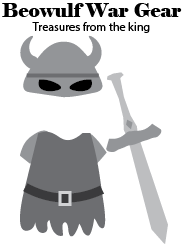
Gold no longer glitters. It kills.
Mirrored: The Ancient Hall & Anglo-Saxon Hall
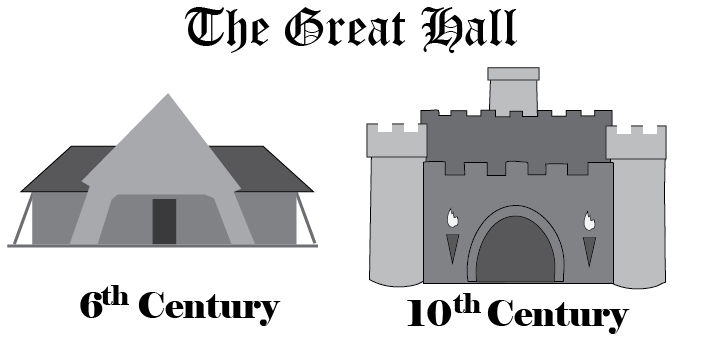
Mirrored: Ancient Tribes and Modern Times
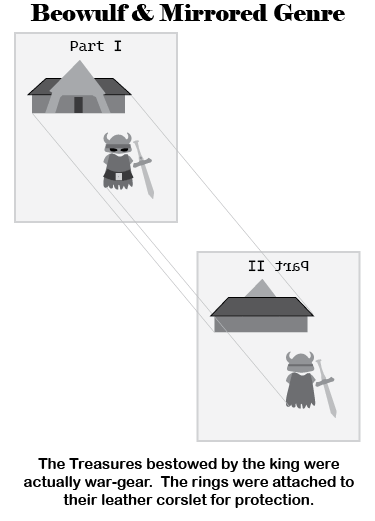
- The three hundred year old treasure from a forgotten tribe
- The Geats will soon disappear.
- The treasure, it turns out, was actually buried a thousand years before with a deadly curse.
- The Wægmundings have already disappeared. We find that out very late. Only Beowulf and Wiglaf are left of his father's people.
So much death and destruction for the love of gold and the honor of revenge and the glory of war.
Hint to students: Theme, theme, theme. And all of based on the mead hall which is Theme, setting, and mirrored genre.
Beowulf, the Bear-Man, was - as far as we can tell - a fictitious character; though it's possible he was a legend based on a strong, large man. But, it should be noted, the Wægmundings and the Geats - as well as the Jutes and Frisians of the tale - were genuine tribes that did genuinely get wiped-off the map at the time the events in his story took place.
The tone becomes more morose as the poem progresses. Perhaps its author (date and name unknown) had his own fears. The manuscript at least we can date - about 1000 A.D. The Norman Invasion was 1066 - the end of the Anglo-Saxon era.
Did the author look ahead and fear that they, too, would soon have their great hall and their culture and identity destroyed just as all the tribes he wrote about?
the ultimate mise-en-abyme!
Get the Beowulf Unit Study
Unlock the action plot, history, and debates of the ancient tale.
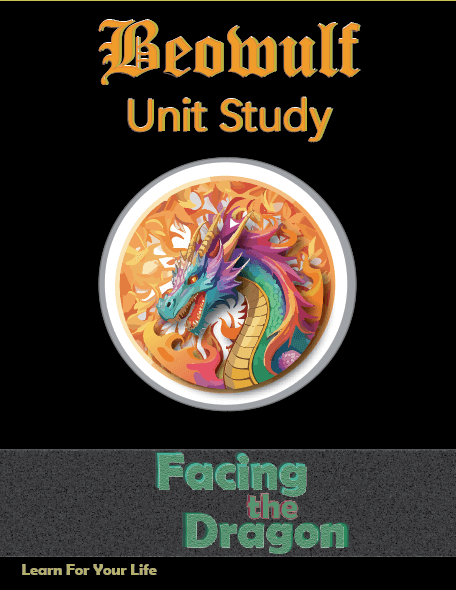
Available in Paperback OR Printable Download
253 pages (Includes Student Pages, Teacher Key, References, Maps, Charts and More!)
Print It Now

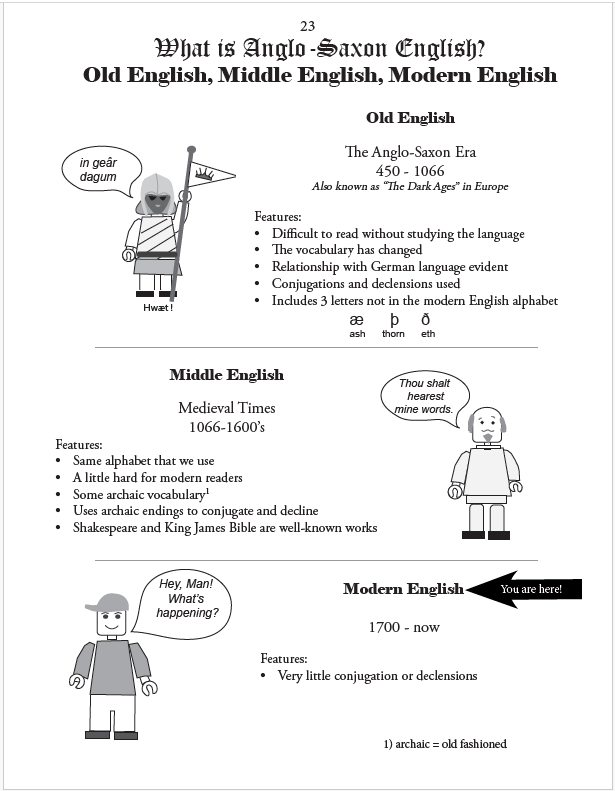
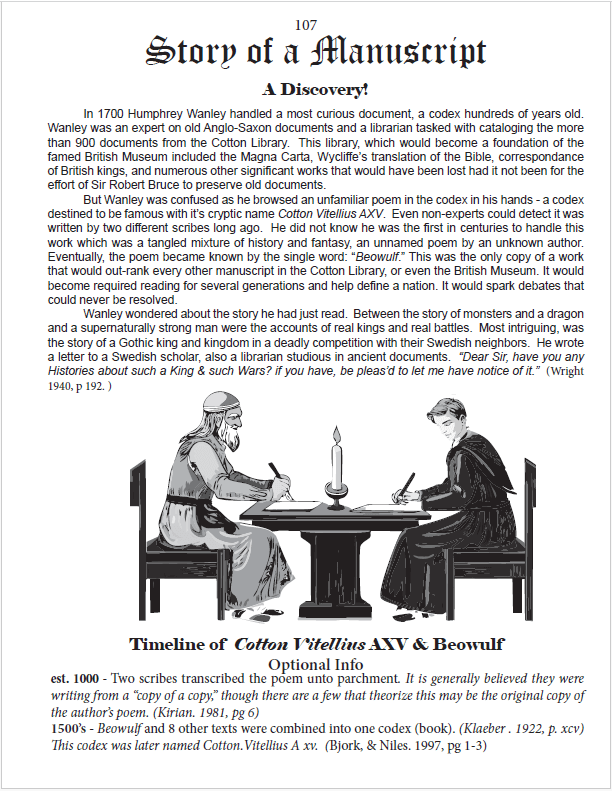
![]()
$5.99 Your link to print will last for five days.
Ready-in-a-minute lesson plans can be used with any translation.
Easy-to-read summary for each section.
Softcover Edition - Mailed to You
The same pages are in the softcover book and the printable file. Keep your papers bound together and use this book for years to come. It will be your go-to-guide for all things Beowulf!
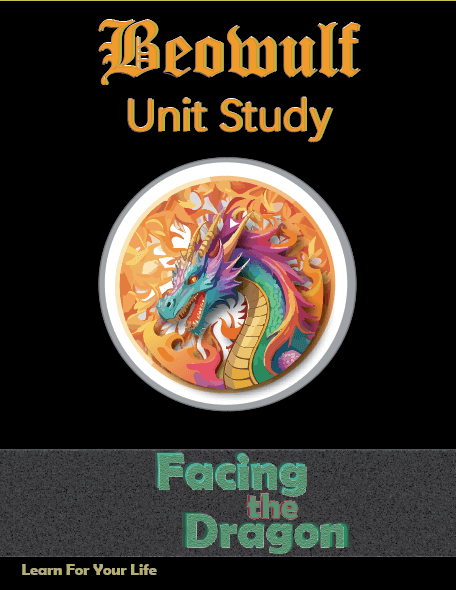
![]()
17.95 Soft Cover Manual
Mailed to You
Beowulf Pages
Check here for all things Beowulf.

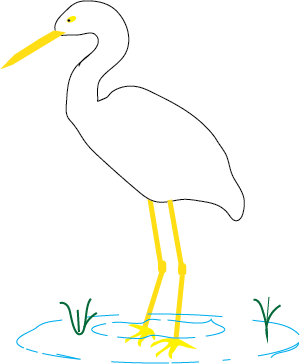
About Our Site
Hands-On Learning



